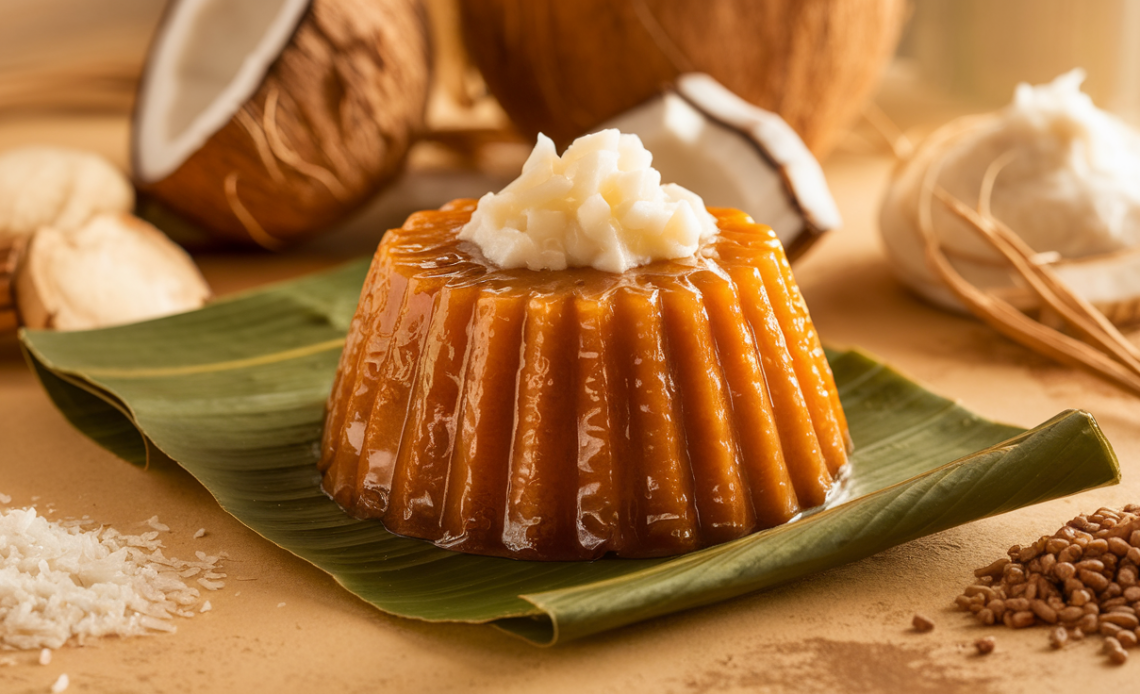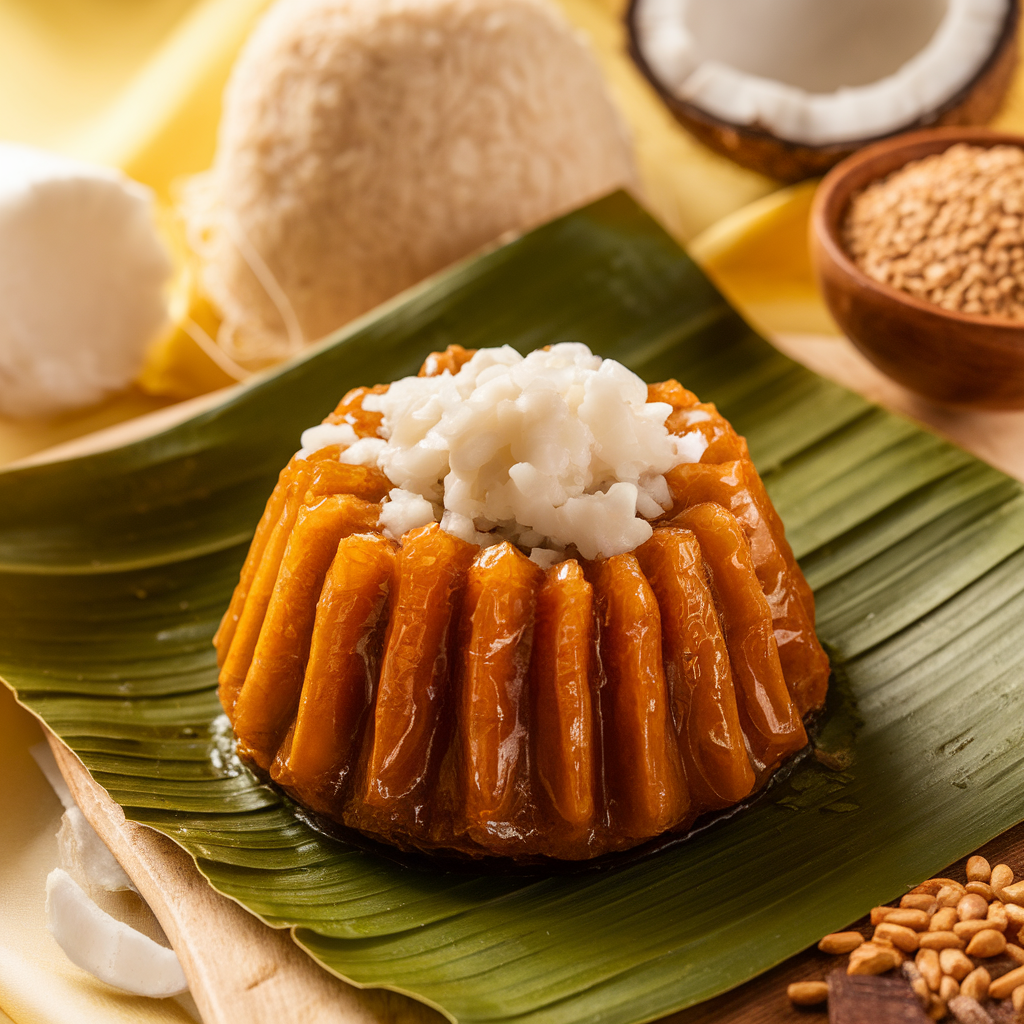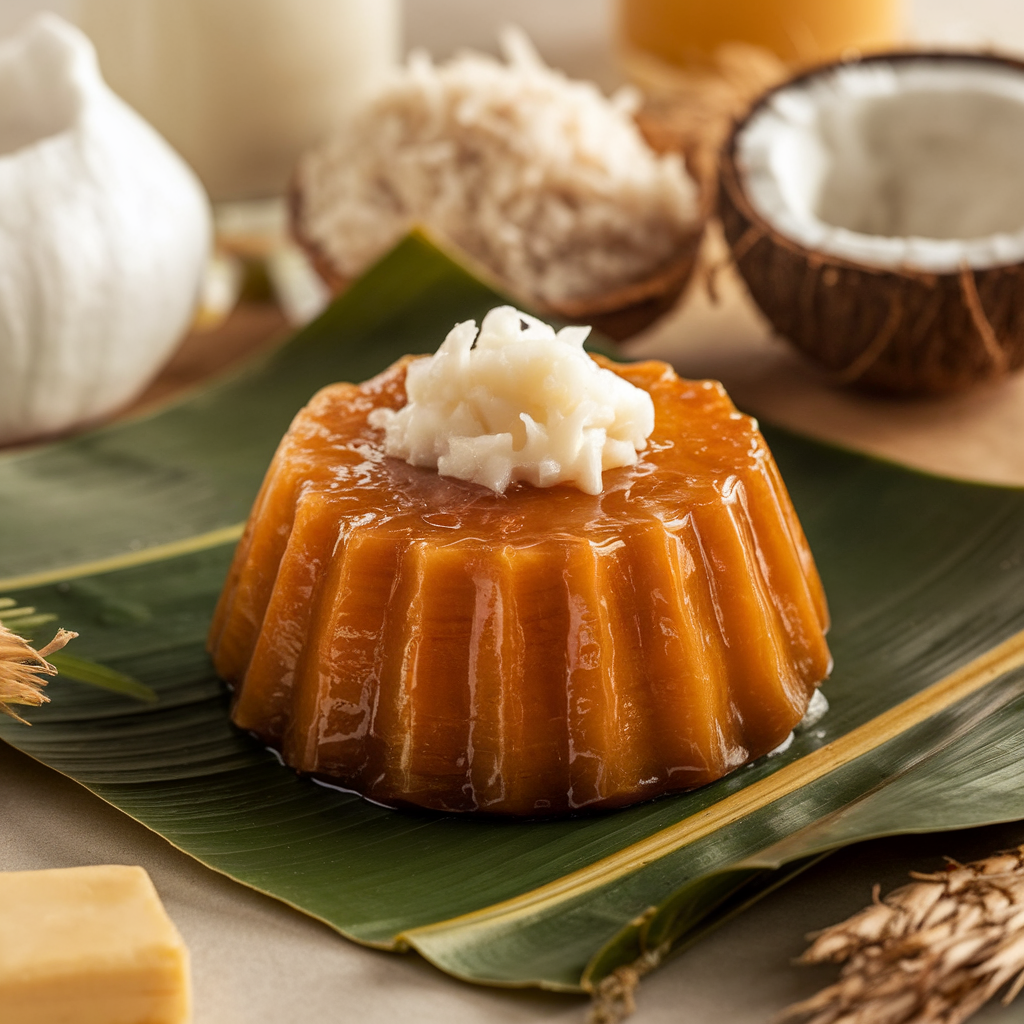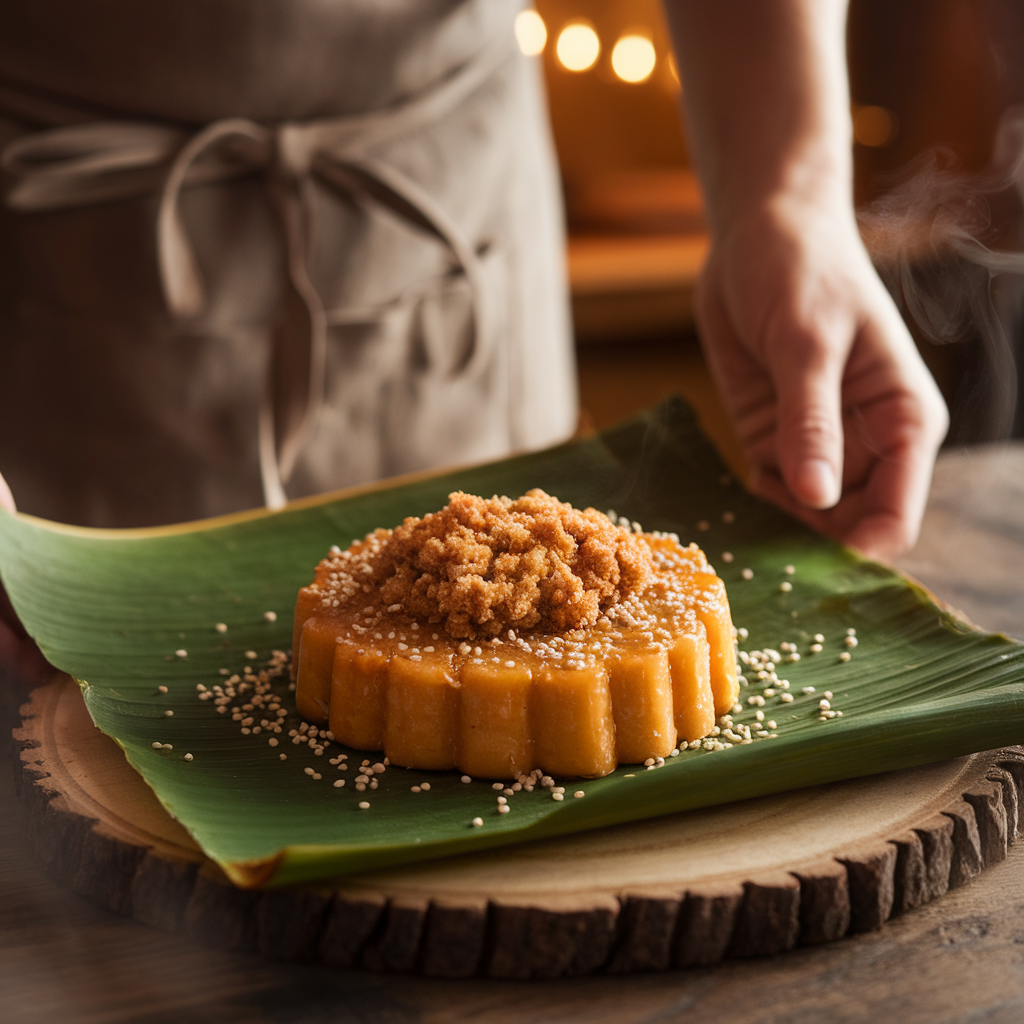
The Ultimate Guide to Making This Classic Filipino Treat
Table of Contents
- Introduction
- What is Biko?
- Ingredients and Substitutions
- How to Make Biko With Latik – Step-by-Step
- Tips for Perfect Biko Every Time
- Variations and Serving Suggestions
- Frequently Asked Questions
- Conclusion
1. Introduction
Biko, a beloved traditional Filipino dessert, is a sticky rice cake made with glutinous rice, coconut milk, and brown sugar. It’s sweet, satisfying, and often crowned with a golden, crispy coconut curd topping called latik. Whether you grew up eating Biko at family gatherings or you’re new to Filipino food, this easy Biko recipe is a must-try.
This guide will walk you through how to make Biko with latik, share the history behind this iconic treat, and give tips for perfecting your own Biko recipe with latik and coconut milk at home.
2. What is Biko?
Biko is a type of kakanin (Filipino native delicacy) made primarily with glutinous rice (locally called “malagkit”), cooked in rich coconut milk and brown sugar. It’s commonly served during holidays, fiestas, and family gatherings. Topped with latik—fried coconut milk curds—it’s a delicious, fragrant, and indulgent dessert.
Though often confused with bibingka, another rice cake made from rice flour and baked in banana leaves, Biko is chewier and stickier, thanks to the whole glutinous rice grains.
This Filipino Biko recipe stands out because of its luscious, glossy texture and caramel-like flavor from coconut sugar or muscovado, giving it that signature toasty sweetness.
3. Ingredients and Substitutions
Main Ingredients for Biko:
- 2 cups glutinous rice (malagkit rice)
- 2 cups coconut milk (first press if possible)
- 1 ½ cups brown sugar (or muscovado sugar for deeper flavor)
- ¼ teaspoon salt
- 1 cup water (for rice cooking)
For the Latik Topping:
- 1 can (400ml) coconut cream (or fresh coconut cream if available)

4. How To Make Biko With Latik – Step-by-Step
Let’s walk through this easy Filipino Biko recipe in three parts: cooking the rice, making the coconut caramel, and preparing the latik topping.
Step 1: Cook the Glutinous Rice
- Rinse the glutinous rice in water until the water runs clear. Drain.
- In a pot, add 1 cup water and 1 cup coconut milk to the drained rice.
- Bring to a boil over medium heat. Stir occasionally to prevent sticking.
- Once boiling, reduce to a simmer and cover. Cook until the rice absorbs the liquid and becomes soft, about 15-20 minutes. It should be partially cooked but not mushy.
Step 2: Make the Coconut Caramel Mixture
- In a large non-stick skillet or wok, combine the remaining 1 cup coconut milk, 1 ½ cups brown sugar, and ¼ teaspoon salt.
- Stir the mixture over medium heat until the sugar dissolves completely and starts to thicken slightly—about 8 to 10 minutes.
Step 3: Combine Rice and Caramel
- Add the partially cooked rice into the coconut caramel mixture.
- Mix thoroughly to ensure every grain is coated.
- Cook over low heat, continuously stirring, for about 10–15 minutes until the rice is thick, sticky, and glossy.
- The mixture should pull away from the sides of the pan when stirred.
Step 4: Transfer and Flatten
- Grease a square or rectangular baking dish (8×8 inches works well).
- Spoon the cooked Biko mixture into the dish.
- Flatten and smooth the top using a greased spatula or back of a spoon.
- Let it sit while you prepare the latik topping.
Step 5: Make Latik (Coconut Curd)
- In a separate non-stick pan, pour in 1 can (400ml) of coconut cream.
- Cook over medium-low heat, stirring occasionally.
- As the coconut cream reduces, it will separate into oil and solids.
- Continue cooking until the solids turn golden brown and slightly crispy.
- Strain out the oil (you can use it for greasing pans!) and reserve the curds.
Note: Making latik takes 30–40 minutes, so you can do this in advance or simultaneously while cooking the Biko.

Step 6: Assemble and Serve
- Once the latik is ready, sprinkle it generously over the top of your Biko.
- Let the Biko cool completely before cutting into squares or rectangles.
- Serve at room temperature or chilled. Store leftovers in an airtight container for up to 3 days in the fridge.
5. Tips for Perfect Biko Every Time
- Use good-quality glutinous rice. Not all sticky rice is created equal. Look for rice labeled malagkit or glutinous rice at Asian stores.
- Don’t overcook the rice in step one. It will continue cooking later when combined with the caramel mixture.
- Use muscovado sugar for a deeper molasses flavor in your sun-dried tomato pasta sauce—oops, we meant Biko! (Keep those pasta ideas for another day!)
- Patience with latik pays off. The golden, crunchy coconut bits are worth every minute.
6. Variations and Serving Suggestions
Want to personalize your Biko recipe with latik and coconut milk? Here are a few ideas:
🍫 Chocolate Biko
Add 1/3 cup cocoa powder into the caramel mixture for a chocolate twist.
🥥 Toasted Coconut Topping
Sprinkle toasted desiccated coconut instead of (or along with) latik for extra texture.
🌸 Pandan or Ube Flavor
Infuse the coconut milk with pandan leaves or add ube halaya (purple yam jam) for a pop of color and unique flavor.
🍌 Banana Leaf Wrapping
For special occasions, serve Biko on banana leaves to enhance aroma and add authenticity.

7. Frequently Asked Questions
Q: What’s the difference between Biko and Bibingka?
A: Biko is a sticky rice cake made with whole glutinous rice, while Bibingka is typically baked and made from rice flour, eggs, and milk. Bibingka also often features cheese or salted eggs as toppings.
Q: Can I use regular rice?
A: No, regular rice won’t give the sticky, chewy texture that makes Biko what it is. Glutinous rice is essential.
Q: Can I use coconut milk instead of cream for latik?
A: Yes, but coconut cream will yield more latik since it has higher fat content. If using milk, results may vary.
Q: Is Biko gluten-free?
A: Yes! Despite the name “glutinous,” the rice does not contain gluten. This is a naturally gluten-free dessert.
Q: How long does Biko last?
A: Biko is best eaten within 2–3 days. Store it in the refrigerator and reheat gently in the microwave if needed.
8. Conclusion
This easy Biko recipe is a celebration of Filipino tradition, comfort, and sweetness. Whether you’re preparing it for a holiday, a family get-together, or just because you crave something rich and coconutty, this dish will never disappoint.
With a satisfying sticky texture and that irresistible latik topping, this classic Filipino Biko recipe is both nostalgic and timeless. So next time you’re wondering how to make Biko with latik, bookmark this recipe and dive into the delicious world of Filipino food.




